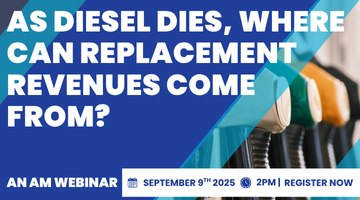Keep a close eye on the new entrants in the UK automotive sector because there are learnings to be found, suggests Maria Bengtsson, EY UK mobility leader.
The latest EY Restructuring Pulse Survey - a European survey of bankers who specialise in working with companies with distressed or non-performing loans – highlighted the marked challenges currently facing automotive companies, naming the sector as the most likely to undergo corporate restructurings in 2025.
Following the announcement of new US tariffs for the automotive industry, it’s unsurprising that prospects for the UK auto sector appear somewhat daunting, particularly as 17% of the almost 780,000 cars produced in the UK in 2024 were exported to the US. The UK’s new trade agreement with the US should go some way to alleviating these concerns, however, as we focus on the remainder of 2025, there are a range of significant hurdles that automotive companies will need to overcome.
Regulatory hurdles continue to persist
Firstly, a complex regulatory landscape has been a constant fixture for the UK auto industry in recent years. This is expected to remain a theme in the months ahead, with the UK’s battery electric vehicle (BEV) market share still currently trailing the 28% Zero Emissions Vehicle (ZEV) Mandate target, and the 2030 ban on the sale of new petrol/diesel vehicles edging closer.
These challenges are intensified by the long lead times required to bring new products to market.
Although the recent announcement of greater flexibility in the ZEV Mandate legislation, reduced penalties for non-compliance and the launch of the UK’s new Industrial Strategy have offered some relief to auto manufacturers, the regulatory landscape remains complex and is continually evolving
Beyond the ZEV Mandate, the recent announcement of US tariffs, and a lack of clarity around the longevity and detail of these tariffs, has caused a further layer of complexity for the market. Planning ahead is therefore challenging, with companies needing to manage the risk of inefficiencies later down the line should regulations change after they have pivoted their operations in line with earlier announcements.
Consumer preferences, charging infrastructure and international competition remain key challenges
Given the rapid advancement of a range of technologies in recent years, consumer expectations and preferences have shifted. For example, consumers are now often compelled to purchase vehicles based on modern technology within the vehicle, which is ramping up the need for auto manufacturers to adapt to and adopt new technologies.
This puts an additional cost imperative on companies, as well as a need to enlist the right expertise and skills from partners and/or staff.
Beyond that, aside from early adopters, a significant proportion of consumers have still not made the EV transition, driven in part by the lack of charging infrastructure currently in place within the UK. This was demonstrated in the most recent EY UK Mobility Consumer Index, with 23% of respondents saying a lack of charging stations was deterring them from purchasing an EV.
Compounding these two fundamental issues is the competitive challenges posed by new entrants, including Chinese manufacturers. While the market share held by Chinese manufacturers in the UK and Europe remains relatively low, it is growing, and China’s competitive position in the EV sector, supported by supply chains and access to a cheaper workforce and low cost energy, means they can offer more compelling price propositions to consumers than European and UK competitors.
How UK auto companies can respond to and prepare for challenges
To address this complex combination of challenges, UK automotive companies should look to place an increasing focus on cost efficiencies and growth. For example, how can they minimise inefficiencies across the value chain to enable them to be more competitive on EV prices? And how can they encourage localised production?
Partnerships are another potential route auto manufacturers could use to gain a competitive advantage. For example, can they collaborate with other key players in the sector, enabling them to increase their speed to market and reduce the cost of capital? However, when engaging in partnerships, it is crucial for businesses to carefully manage competitive Intellectual Property (IP).
Ultimately, the automotive landscape continues to change rapidly, so manufacturers must be agile to that change. In addition to focusing on legacy peers in the automotive space, they should also be keeping a keen eye on new entrants, to ensure they’re learning from the new competition and rising to the challenge, as well as continuing to implement historically successful manufacturing methods, techniques and approaches to maximise the chances of a competitive future.
The recent announcement of a new Industrial Strategy, the UK’s automotive heritage and access to skilled labour will be crucial to the UK’s ability to counter these challenges.
Author: Maria Bengtsson, EY UK mobility leader




















Login to comment
Comments
No comments have been made yet.